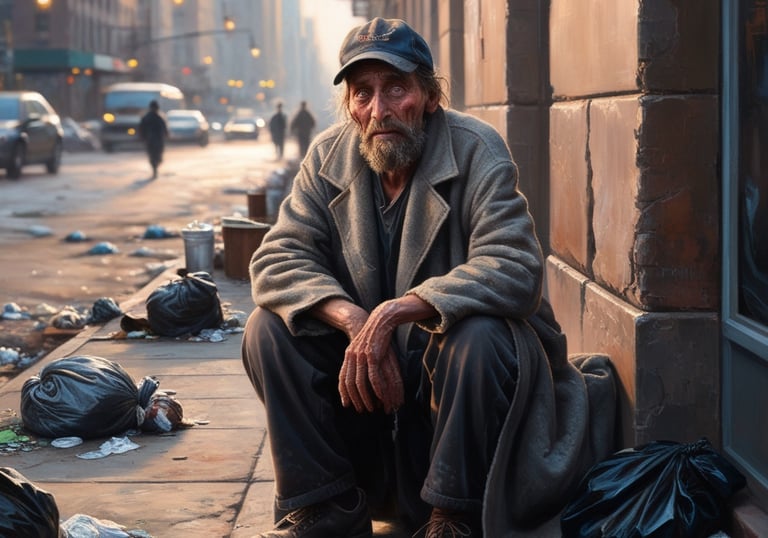Past Actions to Try to Help The Homeless
GENERAL SOCIAL ISSUES
8/14/20243 min read


Homelessness in the past has not seen a lot of improvement, but the reason was not because there was a lack of effort from public and private entities (Padgett, Henwood & Tsemberis 30). The spending from the federal government to solve this problem was an unprecedented amount of funds (around $8.732 billion). In the past, there were three main approaches to helping the homeless.
The first way that was utilized was extending the mission of charitable organizations. One example of these organizations is Boston’s Pine Street Inn. This organization was founded in 1969 to help homeless people with drinking problems, but later was switched to helping homeless people with mental illness and members of ethnic minorities (Padgett, Henwood & Tsemberis 31). Pine Street Inn became a leading shelter and house provider for those in need of those resources. Later on, the Pine Street Inn offered emergency shelters and permanent housing (Padgett, Henwood & Tsemberis 31). Another organization is the Robert Wood Johnson Foundation’s Health Care For The Homeless Initiative. This organization decided to partner up with Pew Charitable Trusts in the year of 1985 and helped homeless people with health problems. They were able to commit 25 million dollars to help these people over five years (Padgett, Henwood & Tsemberis 32). The organization raised awareness around the United States about the struggles and health problems of homeless people (Padgett, Henwood & Tsemberis 32).
The second way homelessness was dealt with in the past was raising public awareness of what homeless people go through and arguing for a human right to housing, also known as Advocacy with Action (Padgett, Henwood & Tsemberis 33). There were many protests for homelessness that happened. In fact, it was reported that at least sixty cities in the United States had homeless protests (Padgett, Henwood & Tsemberis 33). Washington, DC, alone had 83 protests between 1980-1990. In that same period of time, New York had 55 events in order to support the homeless (Padgett, Henwood & Tsemberis 34). The National Union of the Homeless (NUH) was a federation of activist organizations that had a goal of housing rights and economic justice. The NUH pushed for change at many levels, from preventing police harassment to affordable housing (Padgett, Henwood & Tsemberis 35). At the organization's peak it contained 15,000 members (Padgett, Henwood & Tsemberis 35). A march was held in 1989 that was a cosponsor of Housing Now! The NUH rejected the organizers’ insistence on a peaceful, legally sanctioned rally and organized separate protests that led to numerous arrests. Unfortunately with the decrease of leadership and momentum, the organization ceased to be active by the year of 1993 (Padgett, Henwood & Tsemberis 35). Movements on behalf of the poor are often under-resourced. Unlike other social protests and movements, such as AIDS advocacy, movements for homeless people did not attract a lot of wealthy benefactors. Many protesters were homeless people themselves (Padgett, Henwood & Tsemberis 33).
The third way homelessness was dealt with in the past was by using business models. One example is The Corporation for Supportive Housing (CSH). CSH started in the year 1991, and extended financial and technical assistance to nonprofits seeking to fund homeless families and individuals with needs, including help with: mental illness, HIV/AIDS, and drug/substance overuse (Padgett, Henwood & Tsemberis 38). Common Ground (CG) was an organization that started with a decrepit welfare hotel in New York’s busy theater district and used their budget of 36 million dollars to turn the 652 units into housing that was affordable (Padgett, Henwood & Tsemberis 39). The hotel became the largest housing facility in the United States. Later the organization expanded to other buildings in other states (Padgett, Henwood & Tsemberis 38). This approach led to the rise of social enterprise in homeless services.
By the late 1990s, the three approaches had converged in that the first two became small players in the larger industry (Padgett, Henwood & Tsemberis 41). Charities that first started off giving free food and beds turned into multipurpose operations. Advocacy groups depended on private donations, but saw a shortage of donations and an increase in compassion fatigue. Groups that advocated for the homeless went from protest marches into lawsuits and media campaigns; some also turned to government service contracts to stay solvent (Padgett, Henwood & Tsemberis 46). The business model approach had problems as well. These organizations depended on funds and partnerships, and all were constrained by a level of demand that far exceeded the supply.
Sources:
Padgett, Deborah, Benjamin, Henwood, and Sam, Tsemberis. Housing First: Ending Homelessness, Transforming Systems, and Changing Lives. Oxford University Press, 2016.
